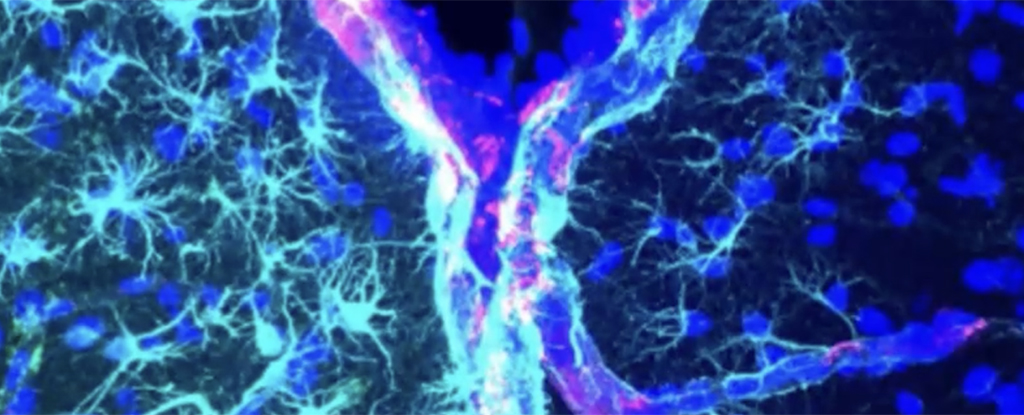Flashing Lights And a Clicking Sound Cleared Toxic Proteins in Alzheimer’s Mice

Could Alzheimer’s disease one day be treated by flashes of light and clicks of sound? Scientists have now demonstrated how stimulating high-frequency brain waves in mice can clear out the amyloid protein clumps associated with Alzheimer’s.
Previous research has shown that stimulating high-frequency brain waves, called gamma waves, might improve the brain’s ability to clear out waste – waste that can contribute to neurological diseases like Alzheimer’s – but this study takes a closer look at the mechanism involved.
In tests on mice, a team led by researchers from the Massachusetts Institute of Technology (MIT) found that flashes of light and clicks of sound at a frequency of 40 times a second (or 40 hertz) helped clear amyloid proteins from the brain’s glymphatic system, a ‘plumbing’ network that removes harmful substances.
A buildup of amyloid protein is noticeable in brains with Alzheimer’s, although scientists still aren’t sure if this aggregation is a direct cause of the disease – it’s likely that there’s much more going on as well.
“We do not yet have a linear map of the exact sequence of events that occurs, but the findings in our experiments support this clearance pathway through the major glymphatic routes,” says cognitive scientist Mitchell Murdock, from MIT.
In the brains of mice engineered to show Alzheimer’s-like symptoms, the team noticed an increase in protective cerebrospinal fluid when light and sound gamma stimulation was applied.
What’s more, pulsations in the neighboring arteries increased too, further boosting the ability of the brain to clear out biological trash. Finally, an increase in interstitial fluid leaving the brain was noted, confirming that waste was being more readily washed away.
A more detailed analysis by the researchers showed the importance of the aquaporin-4 (AQP4) channel in the membraines of astrocyte cells – cells used by the central nervous system to support and protect the brain. When these channels were blocked, amyloid protein buildup went back to normal, so this is a promising area for future studies to look more closely at.
Finally, an analysis of RNA chemical messaging showed increased production of a peptide previously linked to combating Alzheimer’s. All of these changes were apparently prompted by the gamma stimulation in the brains of mice, acting on a subset of neurons that produced several critical regulatory peptides in response to gamma waves.
These are all complex biological reactions that don’t necessarily mean a lot to non-scientists, but it’s all useful information for researchers trying to find out more about what causes Alzheimer’s and how the degradation it causes might be reversed – in particular, by improving the brain’s ability to flush out waste.
“Our findings establish novel mechanisms that recruit the glymphatic system to remove brain amyloid,” write the researchers in their published paper.
The research has been published in Nature.
Source : 1